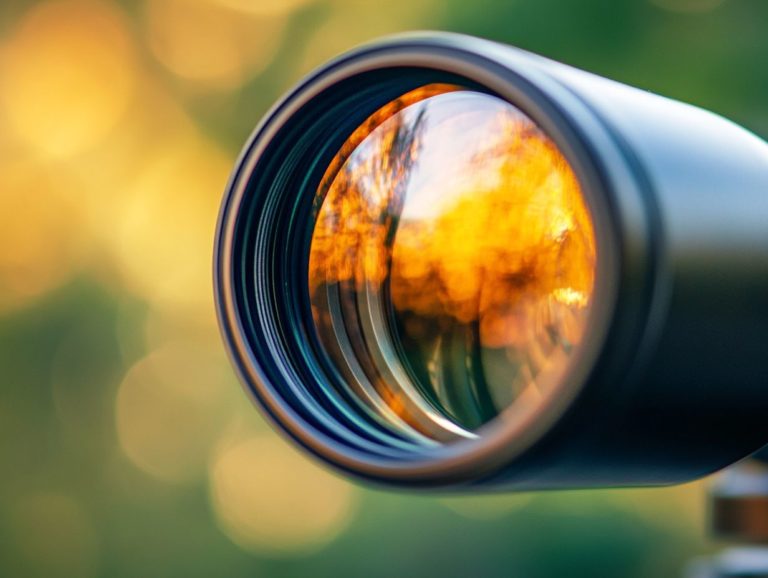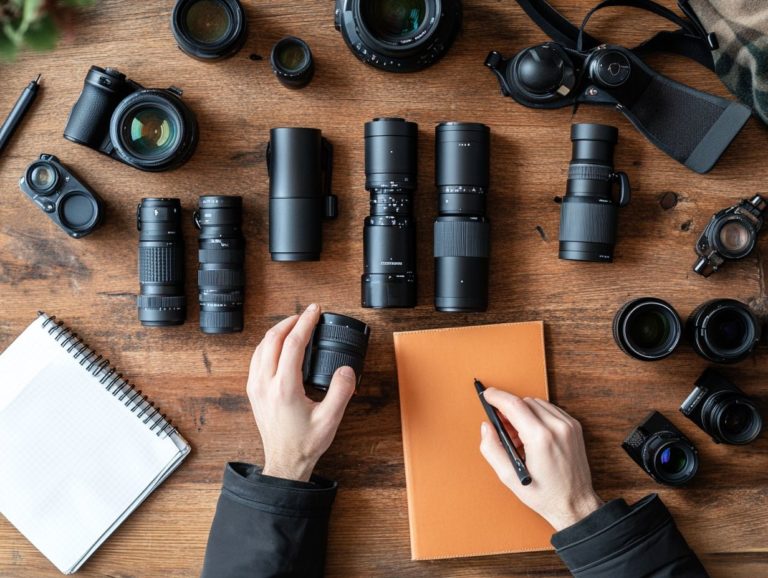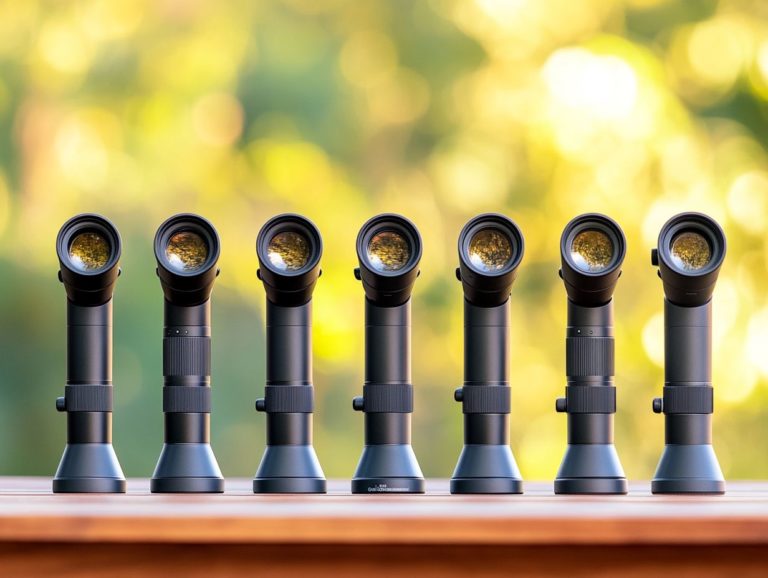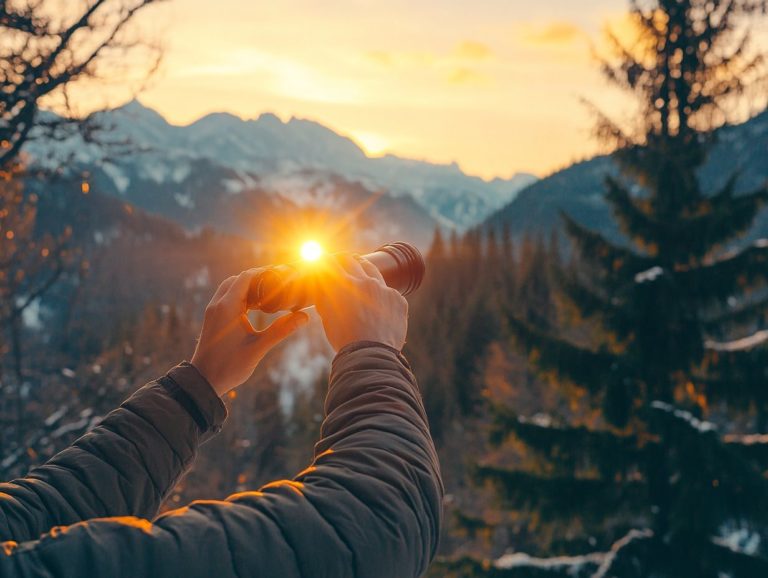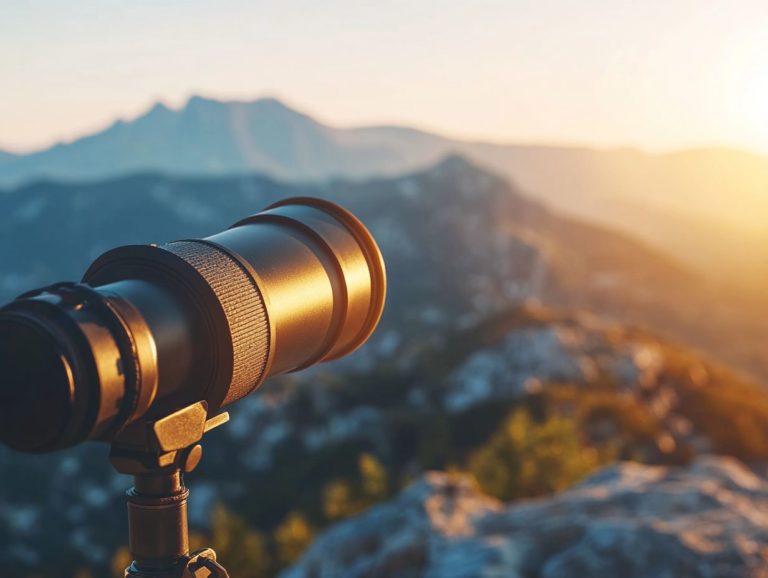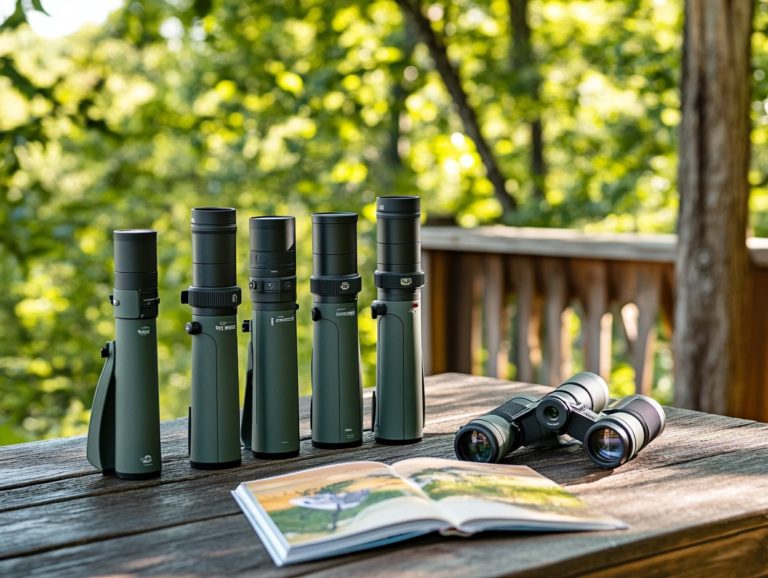Spotting Scope Calibration: Why It Matters
Spotting scopes are indispensable tools for birdwatchers, hunters, and outdoor enthusiasts. Their true effectiveness relies on proper calibration.
This article delves into the essentials of spotting scope calibration, exploring its definition and significance. You ll uncover the advantages of accurate calibration and the potential pitfalls that come with neglecting this vital step.
A comprehensive step-by-step guide to calibrating your scope will be at your fingertips. You ll find recommended tools and troubleshooting tips for common issues. By the end, you’ll be thoroughly equipped to elevate your spotting experience to new heights.
Contents
- Key Takeaways:
- Understanding Spotting Scope Calibration
- Importance of Proper Calibration
- How to Calibrate a Spotting Scope
- Tools and Techniques for Calibration
- Troubleshooting Common Calibration Issues
- Frequently Asked Questions
- What is spotting scope calibration and why does it matter?
- How often should I calibrate my spotting scope?
- Can I calibrate my spotting scope myself?
- What are the consequences of not calibrating my spotting scope?
- Is there a difference between calibration for different types of spotting scopes?
- Does the weather affect the calibration of a spotting scope?
Key Takeaways:
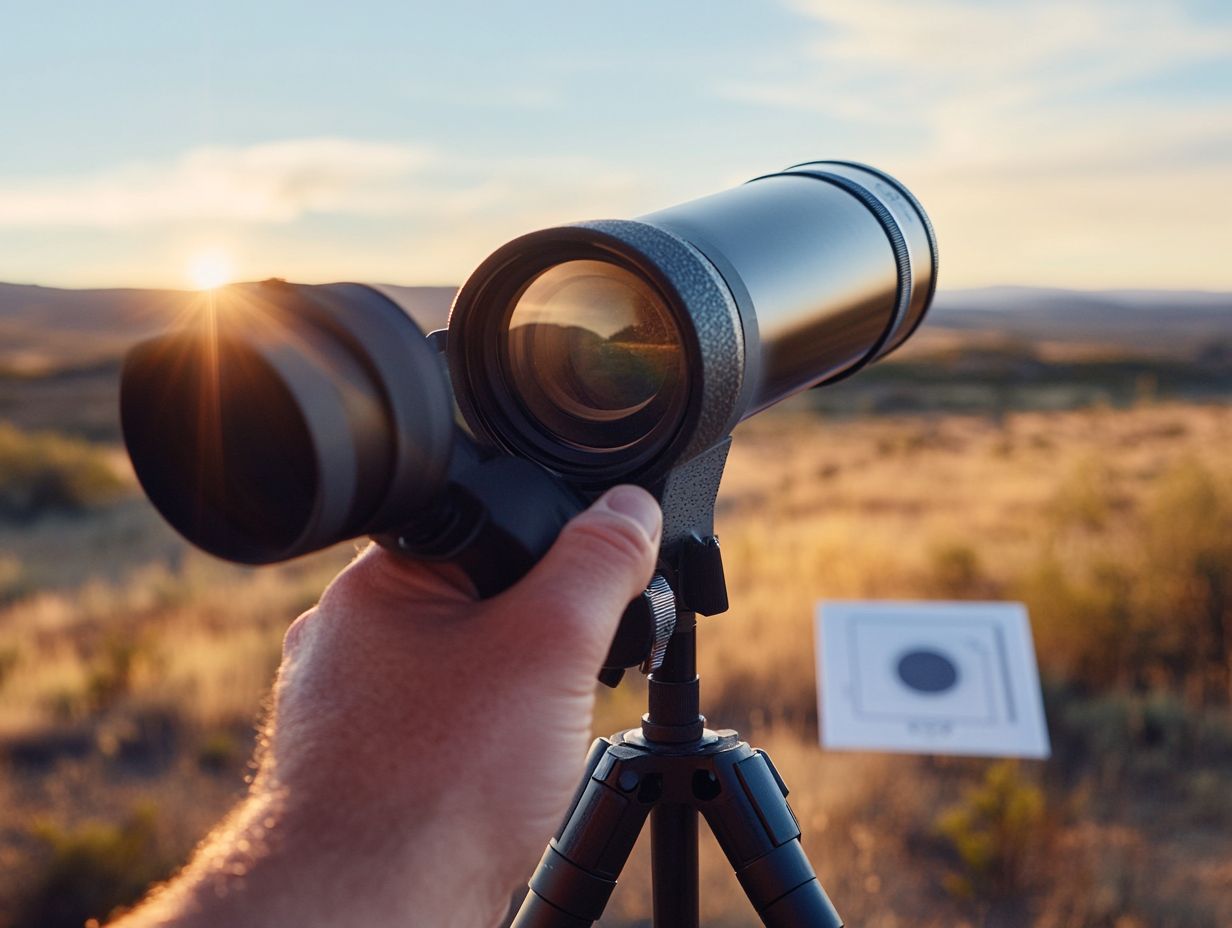
- Proper calibration of a spotting scope is crucial for accurate and precise viewing.
- Accurate calibration has many benefits, including clearer images and improved shooting accuracy.
- Inaccurate calibration can distort images and lead to missed shots. Regularly calibrating your spotting scope is essential.
Understanding Spotting Scope Calibration
Spotting scope calibration is an essential process that guarantees your rifle scope delivers the utmost accuracy and precision for enhanced shooting performance. It involves fine-tuning various settings, such as horizontal adjustment and how far the bullet falls, to ensure the vertical crosshair aligns perfectly with the actual point of impact.
Proper calibration not only elevates optical performance but also streamlines scope zeroing and adjustment verification across diverse atmospheric conditions and shooting distances. This process is vital for anyone involved in precision shooting. It helps you consistently hit your targets with confidence, whether you are competing or simply enjoying the activity.
What is Spotting Scope Calibration?
Spotting scope calibration is all about making those precise adjustments to your rifle scope. Understanding spotting scope optics ensures that your optical performance and shooting accuracy are on point.
This intricate process involves not just fine-tuning the reticle design but also understanding how your point of impact aligns with your aim. Learning how to calibrate accurately can help you hit your targets better, enabling you to be consistently successful at various distances.
Keep in mind that several factors come into play during calibration, such as atmospheric conditions and the scope s magnification level. By grasping these elements, you can effectively make adjustments to counteract parallax errors and elevation and windage shifts, ultimately achieving remarkable consistency.
Importance of Proper Calibration
Proper calibration is crucial for spotting scopes, as it directly affects your shooting accuracy. Understanding the importance of magnification in spotting scopes is vital, whether you’re competing or just shooting for fun.
Advantages of Accurate Calibration
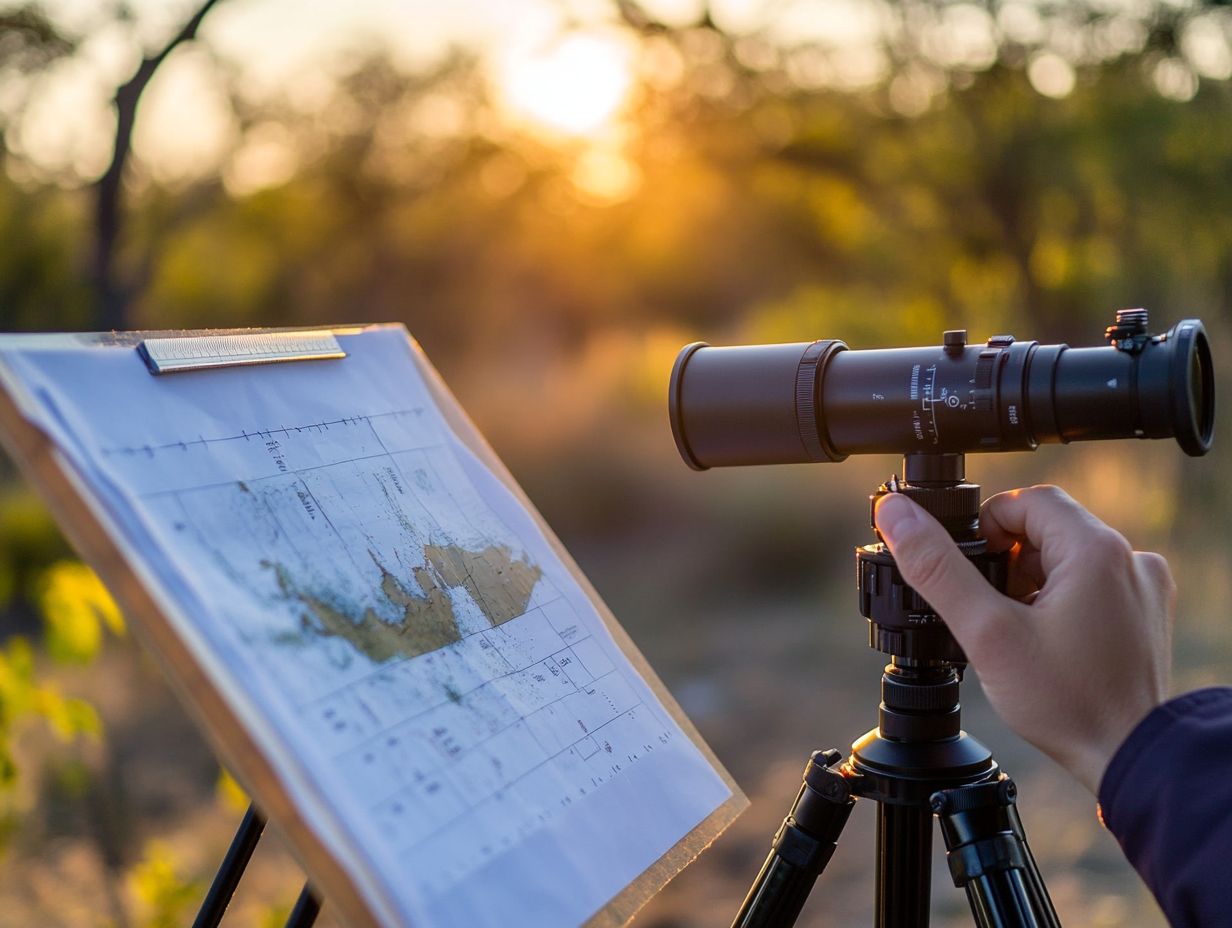
Accurate calibration offers many benefits. These include better shooting practice and improved measurement precision.
When you take the time to ensure your equipment is properly calibrated, you ll notice a remarkable boost in scope performance. This level of precision gives you the power to make finer adjustments during your shooting sessions, instilling greater confidence in your ability to consistently hit your targets.
For instance, during long-range shooting competitions, a well-calibrated scope allows you to effectively account for environmental variables, such as wind and elevation changes, with heightened reliability. But the benefits don t stop there; even on recreational shooting outings, the clarity and accuracy that come from proper calibration make for a more enjoyable and successful experience.
Consequences of Incorrect Calibration
Incorrect calibration of spotting scopes can lead to serious challenges. You may experience windage misses and inaccurate bullet drop calculations that can compromise your shooting accuracy.
When your scopes aren’t properly adjusted, hitting your targets can become increasingly difficult. This could lead to frustrating experiences and potential safety hazards.
Even a slight misalignment in optics can result in a complete miss. This highlights the importance of calibrating every component accurately.
Neglecting calibration can undermine your confidence, leading to less than stellar results at the range or in competitions.
How to Calibrate a Spotting Scope
Calibrating a spotting scope involves a meticulous approach. Follow a series of essential steps to achieve optimal adjustments and boost performance.
Each step is crucial for ensuring your scope functions at its best. This allows you to fully appreciate the clarity and precision it offers.
Step-by-Step Guide
Begin your calibration by using calibration frames. This helps ensure your adjustments fit the specific shooting distances you require.
This process is vital for achieving an optimal reticle design and significantly improving your accuracy. Start with the right calibration frame that matches the dimensions ideal for your scope.
Once the frame is set up, align the center of the reticle with the calibration target.
Next, adjust the scope’s elevation and windage settings. Verify your adjustments by conducting test shots.
This methodical approach guarantees precision and cultivates consistency in your performance. It allows you to make adjustments based on real-time feedback.
Tools and Techniques for Calibration
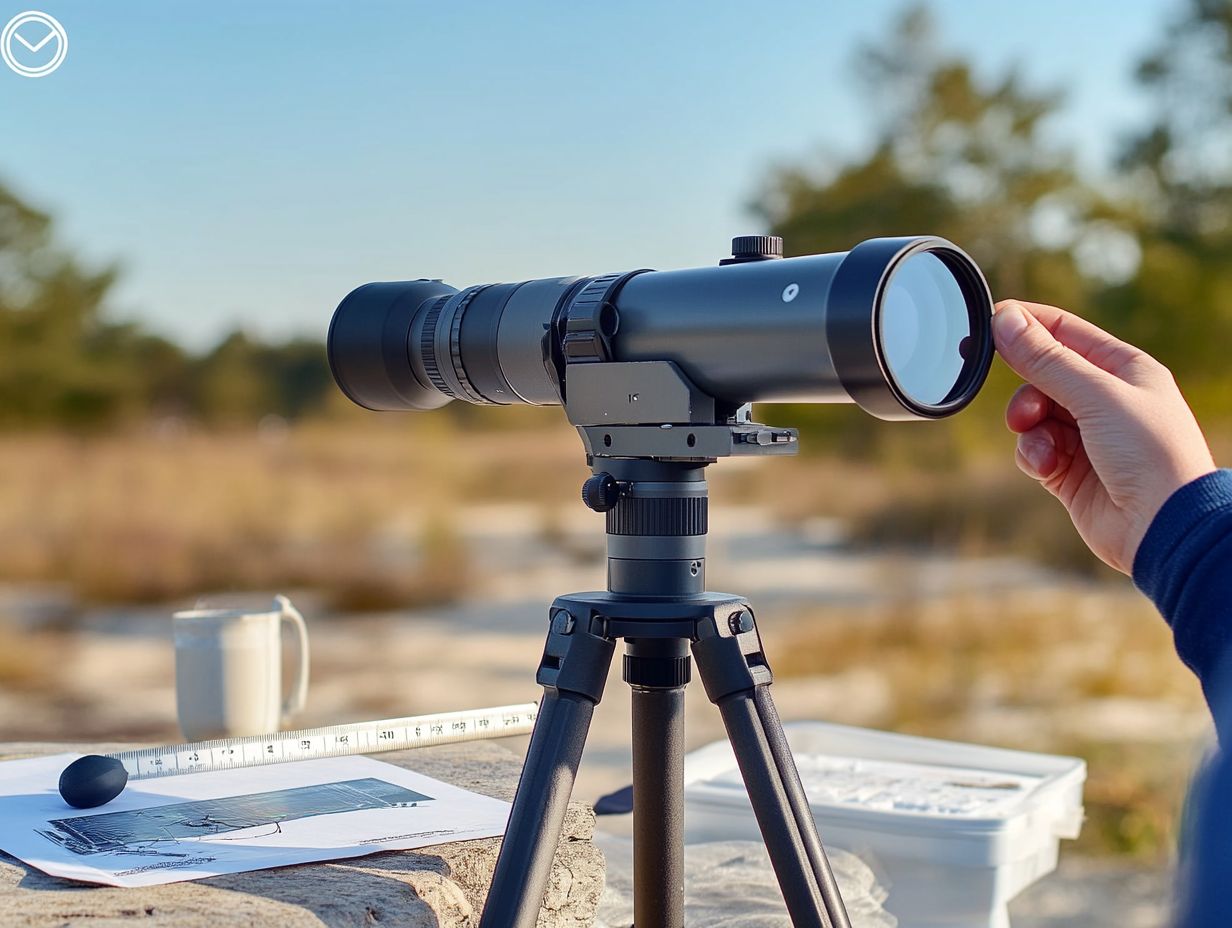
Using a diverse array of tools and techniques is essential for effective calibration. This approach ensures precise adjustments and reliable performance.
Recommended Tools and Methods
Recommended tools for spotting scope calibration include specialized instruments tailored to enhance accuracy. These tools help ensure your scope delivers reliable readings during shooting practice.
Consider using laser collimators to align the optical path. Bubble levels help maintain precise horizontal alignment.
Methods like target calibration let you compare your shot placement against a known standard. This helps refine your accuracy even further.
Utilizing reticle patterns can confirm alignment and tracking capabilities. This makes each session more effective and increases your aiming precision.
Incorporating these techniques can significantly boost your overall shooting confidence!
Troubleshooting Common Calibration Issues
Troubleshooting common calibration issues enhances your proficiency with spotting scopes. It significantly improves your shooting accuracy.
Mastering these techniques allows you to maximize your equipment’s potential in the field.
Identifying and Resolving Problems
Identifying and resolving issues during the calibration of your spotting scope is essential for maintaining accuracy and ensuring precise measurements.
Without proper calibration, you might encounter problems like misalignment, parallax errors, and image distortion. These issues can undermine the adjustments necessary for optimal performance. Start by verifying your scope s adjustments against a known target at various shooting distances.
If you notice discrepancies, adjusting the crosshairs and checking the optical path for obstructions should be your first course of action. Getting the focus just right can significantly enhance clarity and precision during your verification process.
Regular maintenance will help you avoid these issues, ultimately boosting the reliability of your scope when it counts the most.
Frequently Asked Questions
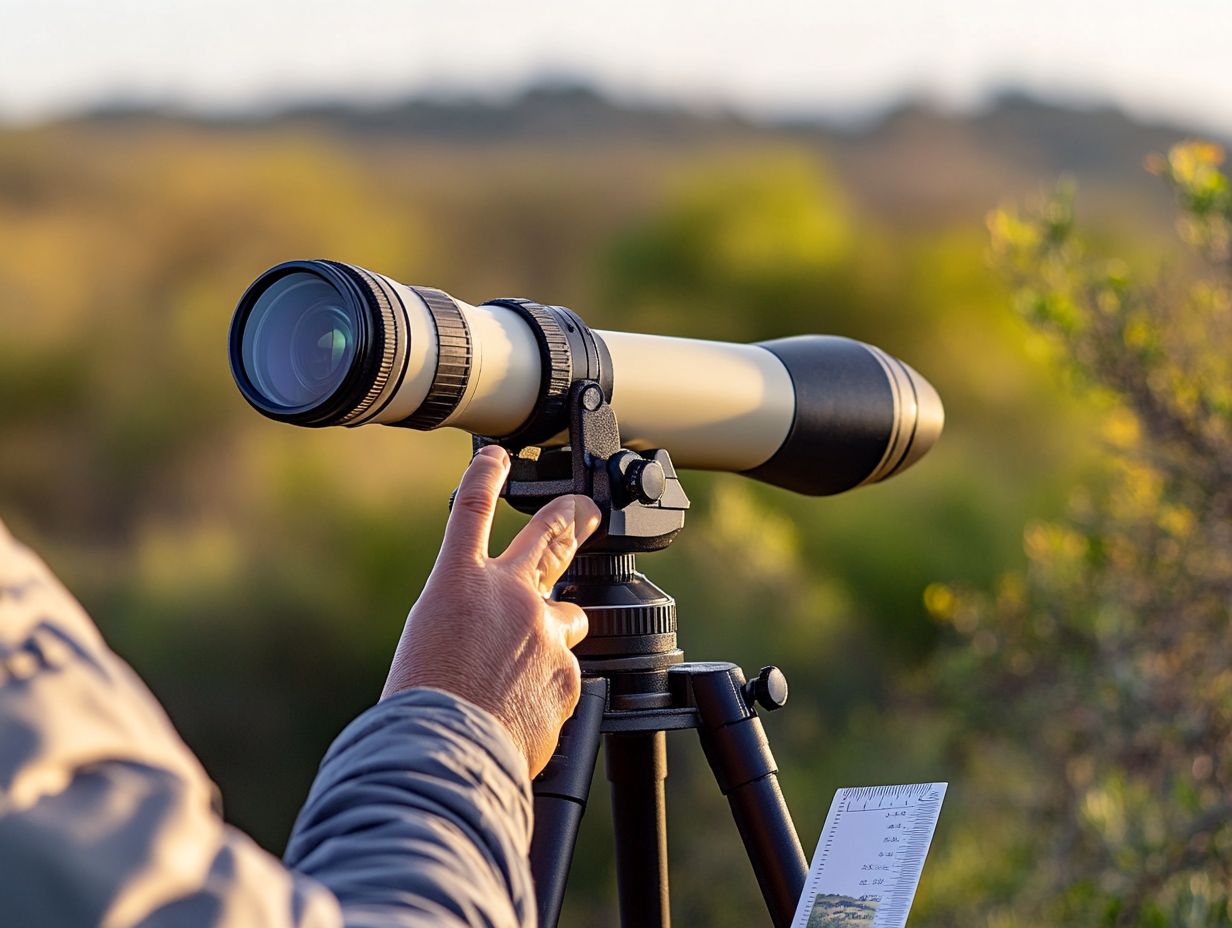
What is spotting scope calibration and why does it matter?
Spotting scope calibration refers to adjusting the optical alignment of a spotting scope to ensure accurate and precise viewing. A properly calibrated spotting scope provides clear images, making it easier to identify objects in the distance.
How often should I calibrate my spotting scope?
The frequency of calibration varies depending on the type and quality of the scope, as well as how often it’s used. As a general rule, calibrating your spotting scope at least once a year is recommended to maintain accuracy.
Can I calibrate my spotting scope myself?
It’s possible to calibrate your spotting scope yourself, but having it done by a professional is advisable for precise optical performance. They have the right tools and expertise to ensure the best results. If you choose to do it yourself, carefully follow the manufacturer’s instructions.
What are the consequences of not calibrating my spotting scope?
If not calibrated, your spotting scope could produce distorted or unclear images. This makes it challenging to observe and identify objects accurately, especially at a distance. You risk missing vital details in your observations!
Is there a difference between calibration for different types of spotting scopes?
Yes, the calibration process may vary depending on the type of spotting scope you have. For example, a rifle scope may require different adjustments compared to a birdwatching scope, particularly regarding windage and bullet drop. Always check the manufacturer’s instructions for the best results.
Does the weather affect the calibration of a spotting scope?
Extreme weather conditions, such as extreme cold, heat, or humidity, can affect calibration and impact shooting accuracy. It s best to calibrate your scope in moderate weather conditions to ensure the most accurate results, which are crucial for effective shooting practice.

